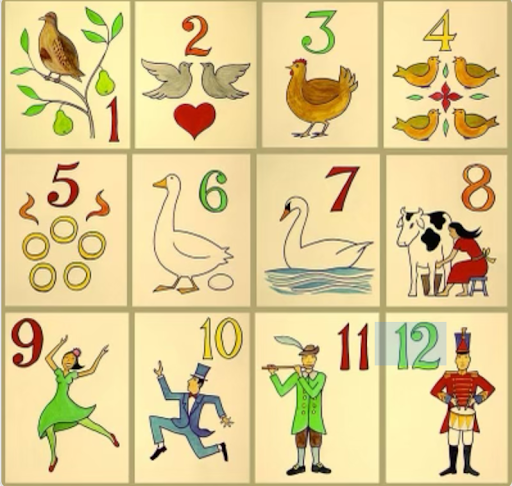Tomatoes: Enemy to Humanity
May 30, 2022
It was a peaceful day; in fact, it was a perfect day. My mother had packed the most delicious sandwiches for us, and, the little child I was, I couldn’t hide my excitement to eat them. I kept nagging her, asking when we could eat, how many she brought, did she remember drinks to go with them. Grown tired of my insistent clamoring, she finally gave in.
My hands trembled with excitement as my mother handed the sandwich over to me, my eyes sparkling with genuine eagerness, my mouth simply salivating at the mere thought of consuming the sandwich.
This sandwich! It’s going to be amazing!
Opening my mouth as widely as possible, just so that I could taste all of its scrumptiousness, I bit into the glorious sandwich.
Yet something was so terribly, terribly wrong.
As soon as I bit into that amazing sandwich, a strange, repulsive, acidic flavor hit my tongue, trouncing all the hope and joy I’d felt. Immediately, I shoved the sandwich at my mother, a look of utter horror filling my young features. Later, I discovered the culprit who had blemished what should’ve been a sublime experience.
It was red. It was round. Most importantly, it was truly evil.
Solanum Lycopersicum—commonly known as the tomato—is a fruit found in all kinds of cuisine. However, less universally known are their immoral, vile qualities. Many people assume that they are essential to one’s diet, offer amazing health benefits, and are generally socially acceptable.
They are very, very wrong. In fact, it is paramount that we stop supporting and liking them immediately. Tomatoes are undoubtedly an appalling, evil, vile fruit, as they are deceitful, share traits with common dangers, and have an abhorrent, acidic taste.
First and foremost, a topic of frequent dispute/popular controversy/etc is the categorization of tomatoes into fruits or vegetables. Many may wonder: why are tomatoes considered fruits, but eaten like vegetables? It’s because tomatoes try to present themselves as vegetables when, in reality, they couldn’t be more obviously fruits. Many of us cook tomatoes like we cook vegetables, creating various pastes, sauces, soup, etc., and more often than not, supermarkets place tomatoes in the fresh produce section alongside vegetables—hence the confusion on their true identities.
However, what we? fail to consider is that vegetables aren’t real. Vegetables are a social construct. The definition of a vegetable is “a plant or part of a plant used as food,” [1] meaning vegetables aren’t really a separate scientific classification. Outrageously, certain encyclopedias suggest that they are both fruits and vegetables, which is unacceptable for both tomatoes and those encyclopediae. Claiming to be something that isn’t real is deceitful. Although some “vegetables” avoid their true identities as fruits, they are not nearly as bad as tomatoes, for tomatoes have far worse traits, which will be introduced in the next paragraph.
When one looks at tomatoes, one striking characteristic is their vivacious red color. For example, if you have never seen a tomato before, consider searching for Bob the Tomato from VeggieTales. Tomatoes are a bright, bright red, striking to the eye. However, the color red is actually a very problematic color, as they are often associated with what we may consider warning signs. For instance, red is associated with the popular term, “red flag”. What is a red flag, you may ask? Well, they are used to signify danger, and as Oxford Reference puts it, “a red flag is used as a warning of danger”[2] . This clearly means that tomatoes themselves are emotionally ill-suited for people. Its red color is symbolic of its red-flag-like qualities, a very, very clear warning sign from mother nature herself that we should stay away from it.
Finally, consider the taste of a tomato, which is arguably its worst quality. As everyone knows, tomatoes are quite acidic, which causes them to taste worse than trash. Tomatoes contain highly acidic substances, amongst which are malic and citric acid. What people are unaware of is the acids’ ability to increase gastric acid levels. Roughly 63 million people in the United States suffer from acid reflux, and one of the things they would most definitely want to avoid is food that increases gastric acid levels [3]. Acid reflux itself may cause severe heartburn, chest pain, difficulty swallowing, food and liquid regurgitation, and chronic sore throats. At its worst, it may cause heart attacks or irreversible damage to and narrowing of the esophagus, which are often connected to high chances of esophageal cancer. Not only do high gastric acid levels cause acid reflux, but they are also capable of causing peptic ulcers, which are ulcers in the stomach, and gastrointestinal bleeding, which is bleeding within the digestive tract [4].
Of course, there are many amazing alternatives to tomatoes. Tomatoes are not the only fruits. If you can’t let go of red flags, strawberries and apples are a nice alternative. As Marcus Aurelius once put it, “Whosoever does wrong, wrongs himself; whosoever does injustice, does it to himself, making himself evil.” As long as you like tomatoes, you are wronging your peers and yourself. I hope to see all of you join my mission in eradicating tomatoes from this world.
[1] https://www.lexico.com/en/definition/vegetable
[2]
[3] https://www.gastro-nyc.com/5-worst-foods-acid-reflux-vanguard-gastroenterology-in-new-york-ny
[4] https://www.mayoclinic.org/diseases-conditions/gerd/symptoms-causes/syc-20361940#:~:text=Gastroesophageal%20reflux%20disease%20(GERD)%20occurs,reflux%20from%20time%20to%20time.



AnnaBelle Hu • May 30, 2022 at 8:51 pm
Hi! I just stumbled across this article, and I think your opinion is very interesting! Tomatoes are, in fact, acidic and striking, however, I feel as if these qualities make tomatoes more unique and intriguing. I appreciate you writing this article and sharing your well-valued opinions, however, I simply cannot stand for this slander. You should educate yourself on tomatoes! I would recommend the article, An Homage to Home Grown Tomatoes, written by credible scholars. I would also recommend watching Veggietales again, Bob is, in fact, a wonderful character, full of life and jokes!
AnnaBelle Hu • May 30, 2022 at 8:40 pm
Interesting perspective! However, respectfully, I have to disagree! Tomatoes are truly my favorite food and I find it disheartening to find an article so negative about this beautiful fruit! Thank you for your thoughts, though, even if they’re wrong! 🙂